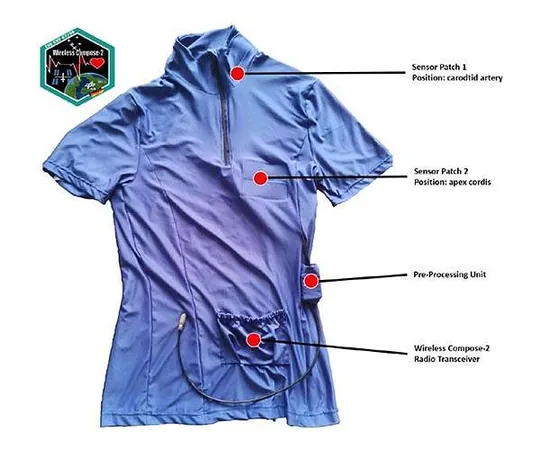
How Wearable Tech is Transforming Astronaut Health in Space
2025-04-02
Author: Daniel
Introduction
In a groundbreaking initiative aimed at understanding the human body's resilience in space, NASA's Expedition 72 astronauts have strapped on cutting-edge wearable sensors to enhance their fitness routines and monitor health during their missions. As humanity heads further into space, the insights gained from these exercises are crucial for developing effective countermeasures for long-duration missions in microgravity.
NASA's Study on Cardiovascular Health
NASA Flight Engineer Nichole Ayers participated in a comprehensive cardiovascular health study, wearing an innovative biometric vest and headband equipped with advanced sensors. Over a continuous 48-hour period, data was collected in real-time, providing critical information about her health metrics. This research is part of the Space Health experiment, which seeks to improve remote medical support for astronauts, who often find themselves far from Earth's immediate healthcare resources.
JAXA's ARED Kinematics Research
In a parallel study, JAXA astronaut Takuya Onishi engaged in biomechanics research known as ARED Kinematics. He exercised using the advanced resistive exercise device (ARED) while donning reflective markers on his legs. This methodology allows researchers to analyze the impact of exercise on musculoskeletal health in microgravity, emphasizing the importance of maintaining astronaut fitness during prolonged missions.
Roscosmos Circulatory System Experiment
Roscosmos cosmonauts Alexey Ovchinin and Ivan Vagner conducted a fascinating circulatory system experiment, exploring how blood flow redistributes in a microgravity environment. By placing sensors on strategic points such as their foreheads, fingers, and toes, they documented shifts in circulation, which are critical for understanding the physiological changes that occur when the body is not subjected to Earth’s gravitational pull.
Ongoing Maintenance by Astronauts
Meanwhile, NASA astronauts Don Pettit and Anne McClain were busy with maintenance work on the International Space Station, removing materials from the Microgravity Science Glovebox. This hardware was integral in previous studies aimed at particle transport across thermal boundaries and has significant implications for separating viruses from fluids, a crucial aspect of disease diagnostics.
Conclusion
As space exploration pushes boundaries, the integration of wearable technology into the daily routines of astronauts not only serves to monitor health but also to pave the way for healthier, more sustainable practices during long-term missions. The findings from these experiments could ultimately influence not only how we approach astronaut training but also the future of human health in space exploration. Stay tuned, as the outcomes of these studies may redefine our understanding of health in microgravity!


 Brasil (PT)
Brasil (PT)
 Canada (EN)
Canada (EN)
 Chile (ES)
Chile (ES)
 Česko (CS)
Česko (CS)
 대한민국 (KO)
대한민국 (KO)
 España (ES)
España (ES)
 France (FR)
France (FR)
 Hong Kong (EN)
Hong Kong (EN)
 Italia (IT)
Italia (IT)
 日本 (JA)
日本 (JA)
 Magyarország (HU)
Magyarország (HU)
 Norge (NO)
Norge (NO)
 Polska (PL)
Polska (PL)
 Schweiz (DE)
Schweiz (DE)
 Singapore (EN)
Singapore (EN)
 Sverige (SV)
Sverige (SV)
 Suomi (FI)
Suomi (FI)
 Türkiye (TR)
Türkiye (TR)
 الإمارات العربية المتحدة (AR)
الإمارات العربية المتحدة (AR)